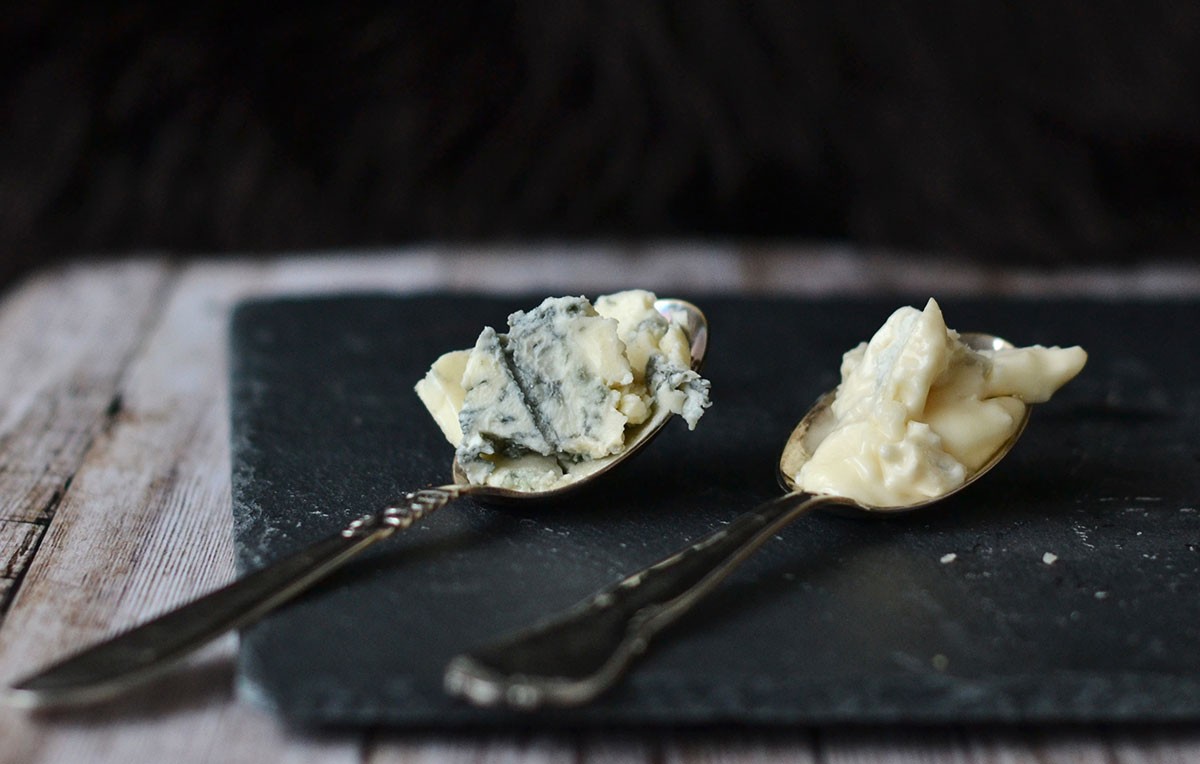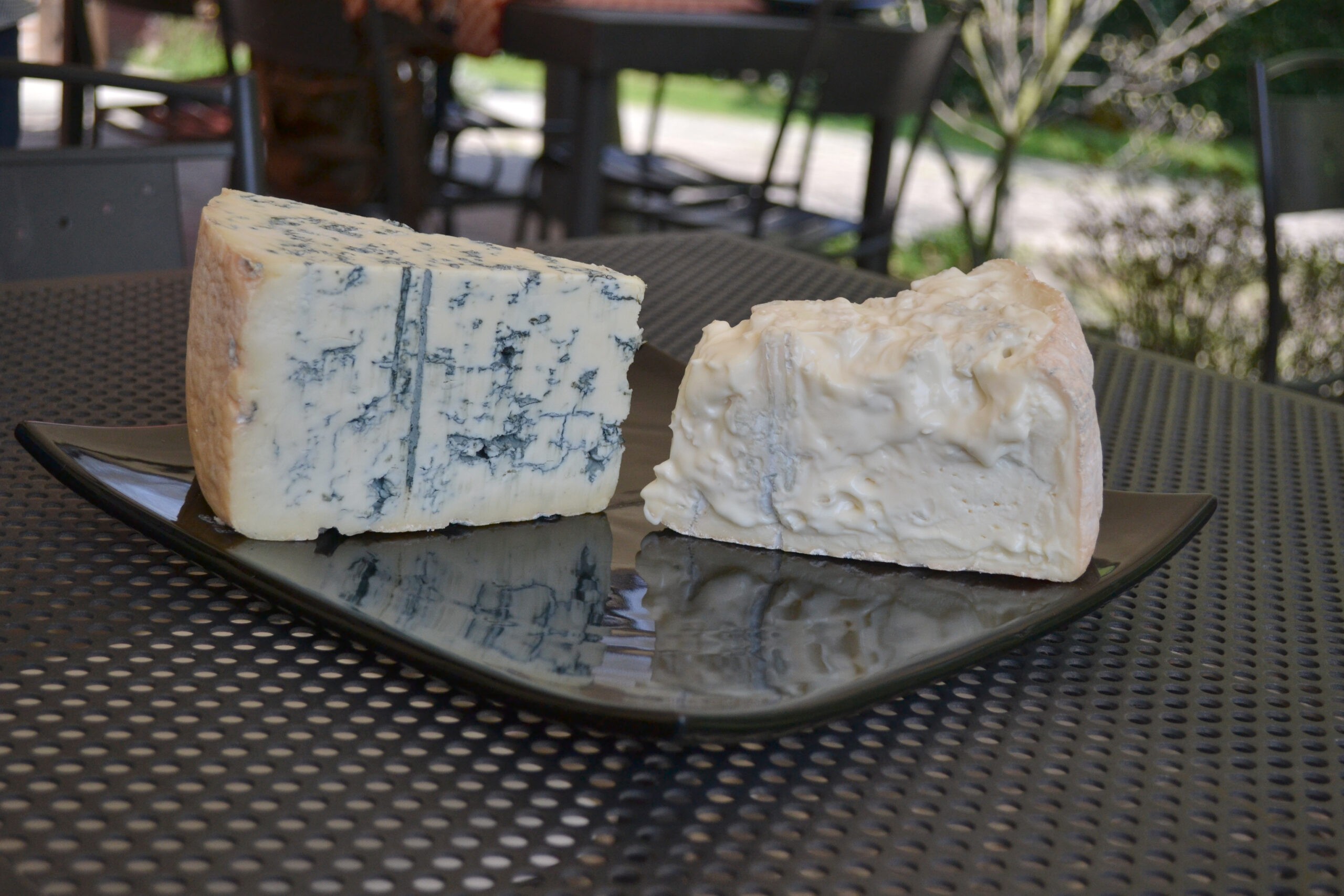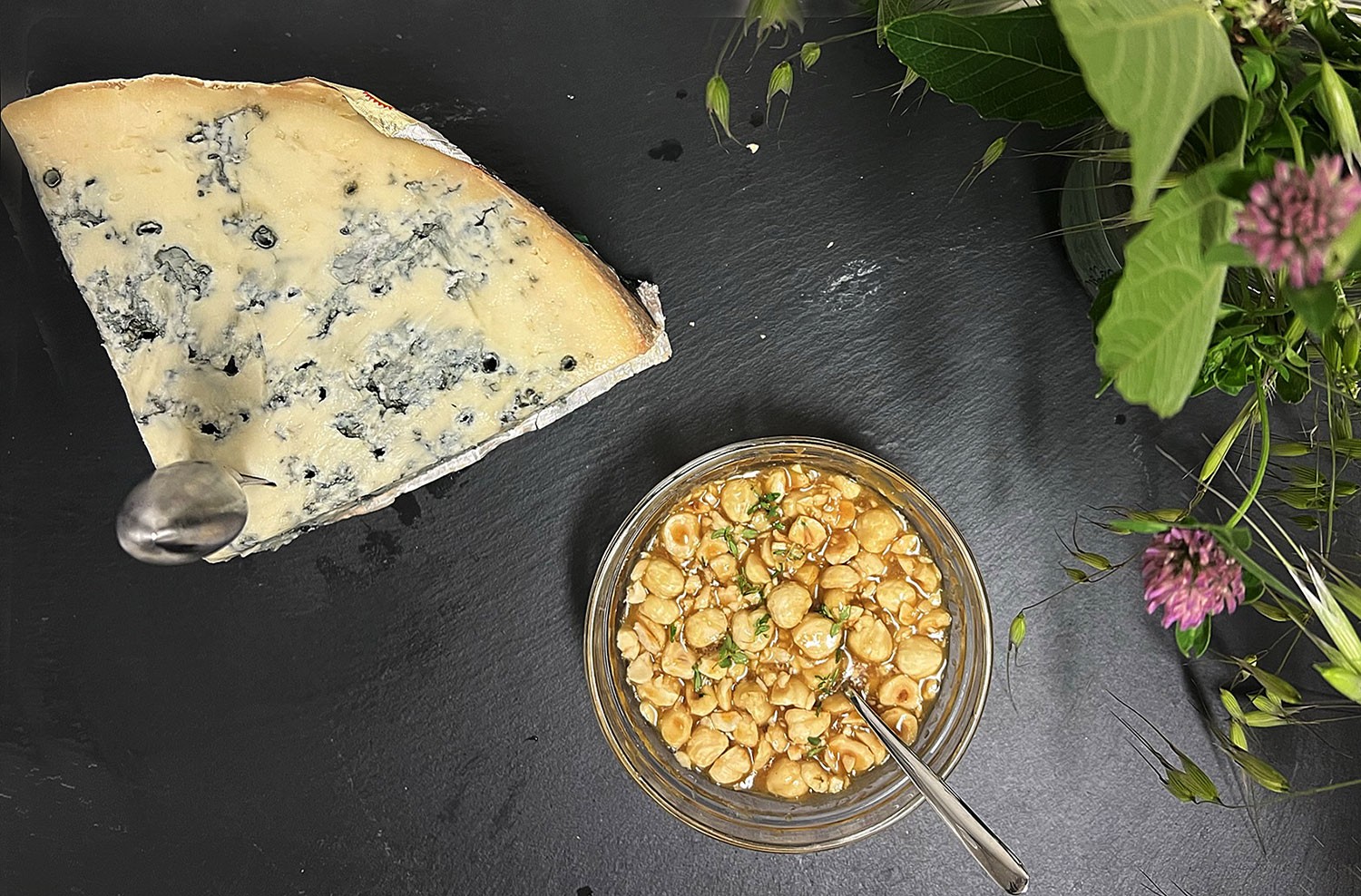Gorgonzola is a veined Italian blue cheese, offering a distinct flavor profile appreciated worldwide. At WHAT.EDU.VN, we aim to provide clear and concise answers to your questions about this cheese. Delve into the fascinating world of Gorgonzola, understand its diverse applications, and discover the qualities that make it a culinary treasure. Interested in broadening your understanding of cheese varieties, flavor profiles, or cheese-making processes?
1. The Origins and History of Gorgonzola Cheese
Gorgonzola’s rich history stretches back centuries, with its roots firmly planted in the heart of Italy. Understanding where it comes from adds to the enjoyment of this unique cheese.
1.1. Early Mentions and Geographic Roots
The first documented mention of Gorgonzola dates back to 879 AD. While some believe it originated in the town of Gorgonzola, near Milan, others argue for Valsassina, a mountainous region north of the city. Valsassina was a hub of milk production and boasted natural caves, ideal for cheese aging.
1.2. Stracchino di Gorgonzola: The Precursor
In the fall, cows descended from the mountains to winter in the valley. Their milk was used to create ‘stracchino di Gorgonzola’. The term ‘stracchino’ derives from ‘stracco’ or ‘stanco,’ meaning tired in Italian, because the milk from tired cows was considered particularly flavorful. Near Gorgonzola, large quantities of this milk were transformed into Gorgonzola cheese. In those early days, the blue mold developed naturally.
1.3. The Serendipitous Discovery: A Legend of Cheese Making
Like many culinary innovations, Gorgonzola’s creation may have involved a happy accident. As the legend goes, a cheese maker in training, distracted by love, left his work early. The next day, he found his half-finished cheese had turned bluish. Attempting to conceal his mistake, he added fresh curd on top. Unfortunately, the entire cheese turned blue. However, upon tasting the result, the cheese master was delighted by its divine flavor.
2. Types of Gorgonzola: Dolce and Piccante
Gorgonzola comes in two main varieties: Dolce (sweet) and Piccante (spicy). Each offers a unique taste and texture, catering to different palates and culinary uses.
2.1. Gorgonzola Dolce: Creamy and Mild
Gorgonzola Dolce is known for its creamy texture, sometimes so soft it can be eaten with a spoon. It has a delicate, pale blue marbling and a mild, slightly sweet flavor.
2.2. Gorgonzola Piccante: Firm and Piquant
Gorgonzola Piccante boasts a firmer texture, with distinct blue mold patterns. Its taste is more pronounced, piquant, and can be quite powerful.
2.3. Distinguishing Characteristics: A Quick Comparison
| Feature | Gorgonzola Dolce | Gorgonzola Piccante |
|---|---|---|
| Texture | Creamy, soft | Firm |
| Blue Marbling | Pale | Distinct, pronounced |
| Flavor | Mild, slightly sweet | Piquant, strong |
| Best Use | Spreads, creamy sauces, milder flavor profiles | Crumbled, bold flavor dishes, cheese boards |



3. Understanding the Production Differences
The distinct characteristics of Gorgonzola Dolce and Piccante arise from variations in the cheese-making process.
3.1. Mold Culture: The Key Ingredient
Both types utilize Penicillium roqueforti, but different sub-varieties are used for each. This difference in mold culture significantly impacts the final flavor profile.
3.2. Rennet and Fermentation
The type of rennet used can also vary, affecting the fermentation process and ultimately influencing the cheese’s texture and taste.
3.3. Ripening Temperature
Dolce matures at a higher temperature than Piccante. This subtle difference plays a crucial role in the cheese’s final characteristics.
3.4. Maturation Period
Dolce is matured for a minimum of 50 days (and a maximum of 170 days), while Piccante matures for at least 80 days (for cheeses over 9 kg) and up to 270 days. This extended maturation period contributes to Piccante’s stronger flavor.
4. Gorgonzola and DOP Status: Quality and Origin
Gorgonzola’s quality and authenticity are protected by its Protected Designation of Origin (DOP) status.
4.1. The Stresa Convention and Protected Status
Gorgonzola received protection as early as 1951 under the Stresa Convention. The DOP designation ensures that the cheese is produced according to strict standards and within a specific geographic region.
4.2. Geographic Restrictions
Gorgonzola can only be produced in Lombardy and Piedmont regions of Italy to earn the DOP seal. This regional specificity is crucial to maintaining the cheese’s unique characteristics.
4.3. Production Standards
The DOP also dictates that the milk must be pasteurized whole milk and that animal rennet (extracted from veal stomachs) must be used. These regulations safeguard the traditional methods of Gorgonzola production.
4.4. The Gorgonzola Consortium
Approximately 30 Gorgonzola dairies are represented in a consortium that continuously monitors the quality and DOP labeling of the cheese. This consortium plays a vital role in upholding the standards and integrity of Gorgonzola.
5. Culinary Uses of Gorgonzola Cheese
Gorgonzola is a versatile cheese with a wide range of culinary applications. Its unique flavor profile can enhance both simple and complex dishes.
5.1. Gorgonzola as a Cooking Cheese
In northern Italy, Gorgonzola is often viewed as a cooking cheese. Its ability to add a subtle, underlying taste of blue mold makes it a valuable ingredient in various recipes.
5.2. Choosing Between Dolce and Piccante in Cooking
Chefs often prefer Gorgonzola Dolce for its milder flavor, using it to add a subtle depth without overpowering other ingredients. Gorgonzola Piccante is used to spice up the flavor when a bolder taste is desired.
5.3. Cheese as a Spice: An Inspired Approach
Thinking of cheese as a spice can inspire creative culinary applications. Consider the strength of the cheese flavor you desire, and then choose the appropriate cheese and quantity accordingly.
5.4. Recipe Ideas with Gorgonzola
- Gorgonzola and Walnut Pasta: A classic pairing that highlights the cheese’s creamy texture and nutty notes.
- Gorgonzola Pizza: Adds a tangy and complex flavor to pizza, complementing other toppings like pears or prosciutto.
- Gorgonzola Salad: Crumbled Gorgonzola elevates simple salads, providing a rich and flavorful counterpoint to fresh greens and vegetables.
- Gorgonzola Risotto: Creates a decadent and flavorful risotto, with the cheese melting into a creamy sauce.
- Gorgonzola Sauce for Steak: A rich and savory sauce that perfectly complements grilled or pan-seared steak.
6. Health Benefits and Nutritional Information of Gorgonzola
Gorgonzola, like other cheeses, offers nutritional benefits but should be consumed in moderation.
6.1. Nutritional Profile
Gorgonzola is a source of protein, calcium, and phosphorus. It also contains vitamins A and B12. However, it is also high in fat and sodium, so portion control is important.
6.2. Health Considerations
People who are lactose intolerant may experience discomfort after consuming Gorgonzola. Pregnant women should avoid unpasteurized cheeses due to the risk of listeria.
6.3. Moderation is Key
Enjoy Gorgonzola as part of a balanced diet. Its rich flavor allows you to use smaller amounts, still adding significant taste to your meals.
7. How to Store Gorgonzola Cheese Properly
Proper storage is essential to maintain Gorgonzola’s quality and prevent spoilage.
7.1. Wrapping and Refrigeration
Wrap Gorgonzola tightly in cheese paper or plastic wrap and store it in the refrigerator. This helps to prevent it from drying out and absorbing odors from other foods.
7.2. Preventing Mold Growth
While Gorgonzola is a blue cheese, additional mold growth can occur. If you notice any unusual colors or odors, it is best to discard the cheese.
7.3. Shelf Life
Gorgonzola typically lasts for 2-3 weeks in the refrigerator. Check the expiration date on the packaging for specific guidance.
8. Gorgonzola Around the World: Variations and Adaptations
While the Italian DOP Gorgonzola is the most well-known, there are variations and adaptations of blue cheese around the world.
8.1. Similar Blue Cheeses
Other blue cheeses, such as Roquefort from France and Stilton from England, share similarities with Gorgonzola but have distinct characteristics.
8.2. Regional Adaptations
Some cheese makers outside of Italy have created their own versions of blue cheese, often using local milk and adapting the production process to suit their environment.
8.3. Exploring Different Blue Cheeses
Sampling different blue cheeses can be a delightful culinary adventure, allowing you to appreciate the nuances of flavor and texture that each offers.
9. Frequently Asked Questions (FAQ) About Gorgonzola
To further clarify any questions you might have, here are some frequently asked questions about Gorgonzola:
| Question | Answer |
|---|---|
| What does Gorgonzola cheese taste like? | Gorgonzola’s flavor profile varies depending on the type. Dolce is mild and creamy with a slight sweetness, while Piccante is more pungent and spicy. Both have a characteristic blue cheese tang. |
| How is Gorgonzola cheese made? | Gorgonzola is made from pasteurized cow’s milk. The process involves adding Penicillium roqueforti spores to the milk, which develop into the blue veins during aging. The cheese is then aged for a specific period. |
| Can I eat the mold in Gorgonzola cheese? | Yes, the blue mold in Gorgonzola is safe to eat. It is a natural part of the cheese and contributes to its unique flavor. |
| What is the difference between Gorgonzola and blue cheese? | Gorgonzola is a specific type of blue cheese made in Italy, while “blue cheese” is a general category that includes various cheeses with blue veins. Gorgonzola has its own distinct flavor and production methods. |
| How can I tell if Gorgonzola cheese is bad? | If Gorgonzola has an ammonia-like smell, excessive mold growth beyond the blue veins, or a slimy texture, it is likely spoiled and should be discarded. |
| Is Gorgonzola cheese vegetarian? | Traditional Gorgonzola uses animal rennet, making it unsuitable for vegetarians. However, some producers may use vegetable rennet, so check the label if you are vegetarian. |
| What wines pair well with Gorgonzola cheese? | Sweet wines like Moscato d’Asti or Sauternes pair well with Gorgonzola Dolce. For Gorgonzola Piccante, try a bold red wine like Barolo or Amarone. |
| Can I freeze Gorgonzola cheese? | Freezing Gorgonzola is not recommended, as it can alter the texture and flavor. It is best enjoyed fresh. |
| How can I use Gorgonzola in cooking? | Gorgonzola can be used in a variety of dishes, including pasta sauces, pizzas, salads, and appetizers. Its strong flavor adds depth and complexity to recipes. |
| Where can I buy Gorgonzola cheese? | Gorgonzola is available at most well-stocked supermarkets, cheese shops, and specialty food stores. |
10. Discover More and Share Your Questions on WHAT.EDU.VN
We hope this comprehensive guide has answered your questions about Gorgonzola cheese! At WHAT.EDU.VN, we understand the challenges of finding quick, reliable answers to your questions. You don’t have to wonder where to turn or worry about expensive consultations.
That’s why we’ve created a platform where you can ask any question, big or small, and receive helpful answers from a knowledgeable community. Whether you’re curious about cheese, cooking, or any other topic under the sun, WHAT.EDU.VN is here to help.
Call to Action
Have more questions about Gorgonzola or anything else? Visit WHAT.EDU.VN today and ask away! Our community is ready to provide you with free, accurate, and easy-to-understand answers.
Contact us at:
- Address: 888 Question City Plaza, Seattle, WA 98101, United States
- WhatsApp: +1 (206) 555-7890
- Website: what.edu.vn